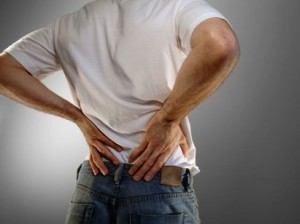Being considerably more exposed than motorists, a cyclist’s primary safety concern is to avoid a collision. Yet there are injuries that can occur without an accident ever taking place. Fortunately, a cyclist has significant —almost absolute— control of injuries that are developed over time; the key is knowing how to avoid them.
Back Pain
For cyclists, both young and old, back pain is a common discomfort that can be remedied or avoided by giving proper attention to the strain placed on the spine and core. The most frequent factors involved in back pain are:
Bike size: If the bike is too large or too small, unnecessary strain may be caused by an arched or stiff back.
Previous injuries: A previous injury may cause a cyclist to favor their left over right in either the legs or arms. The uneven exertion will ultimately place strain on the cyclist’s core.
Riding style: Leaning too far forward or backward can lead to a strain in the lower back.
Core strength: Having strong core muscles will enhance stability and decrease strain on the spine.
Aching Joints
While cycling can be classified as “low-impact” on joints, in comparison to running and other sports, pedaling opens the opportunity for alternate routes of potential strain. Typical causes are:
- Harmful cycling techniques
- Using an unfitted bicycle
- Overuse and overexertion
Solutions can be as simple as adjusting the seat further back or lowering it, making sure that the hip and knee are aligned, or being cautious of exerting yourself longer and harder than your body is ready for. Although joint strain can lead to inflammatory or even degenerative tendon pain, these problems can most often be avoided by early caution for technique, fitness, and consistency of use.
The Secret of Bike Seats
In addition to discomfort, a hard and poorly-fitted bicycle seat can lead to long-term injury–especially in the case of long-distance bicyclers–with the potential to hamper urinary and genital functionality.
A primary cause for perineal pain and injury is not having a seat that is wide enough for the ischial tuberosity —the “sitting” bones— to rest on the seat. If sitting pain is experienced consistently for long periods of time, both temporary or long-term injury may occur. Fortunately, perineal pain and injury can be most often avoided simply by finding a seat that is wide and soft enough to fit the rider’s needs.
Listening to Your Body
Long-term injuries are developed from consistent strain. One of the most important methods of avoiding injury is simply to listen to your body when it says it’s hurt. By paying attention to oncoming pain, habits and equipment can be adjusted to avoid physical harm.
Contact Us
Please, be safe while cycling , and do all you can to avoid accidents and developed injuries. If you have concerns on bicycle accidents caused by reckless behavior or negligence, call us at (801)-506-0800 for a free consultation. We have personal injury lawyers who have the experience and knowledge to help you with your concerns regarding an accident.
Sources:
Ben E. Bejamin. “Cycling and Your Health.” Retrieved from: http://www.bycycleinc.com/pages/article_MTJ.html
Dong Gon Kim, Dae Woong Kim, Jong Kwan Park. “Does Bicycle Riding Impact the Development of Lower Urinary Tract Symptoms and Sexual Dysfunction in Men?” Korean J Urol. 2011 May; 52(5): 350–354.
Edmund R. Burke, Ph.D. “Knees Among Most Vulnerable Joints for Cycling Injuries.” Retrieved at: http://www.active.com/cycling/articles/knees-among-most-vulnerable-joints-for-cycling-injuries?page=3
John J. Wilson, M.D., and Thomas M. Best, M.D., PH.D., “Common Overuse Tendon Problems: A Review and Recommendations for Treatment.” University of Wisconsin Medical School. Madison, Wisconsin: Am Fam Physician. 2005 Sep 1;72(5):811-818. Retrieved at: http://www.aafp.org/afp/2005/0901/p811.html
Katharine McCoy, “How to Avoid Lower Back Pain While Cycling.” Retrieved from: http://www.active.com/cycling/Articles/How-to-Avoid-Lower-Back-Pain-While-Cycling.htm?page=2
Image provided by: askfitnesscoach.com

